Index relies entirely on the support of donors and readers to do its work.
Help us keep amplifying censored voices today.
[vc_row][vc_column][vc_column_text]
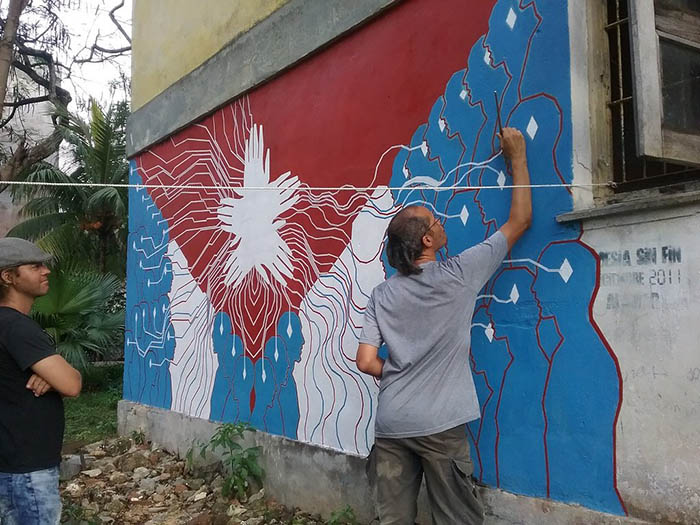
Cuban artist Yasser Castellanos
Despite official efforts to stop it in its tracks, Cuba saw the successful completion of its first independent art biennial, organised without the support of the state, on 15 May. Artist Luis Manuel Otero Alcantara and curator Yanelys Nuñez Leyva, members of the Museum of Dissidence, winner of the 2018 Index on Censorship Freedom of Expression Award for art, organised the ten-day #00Bienal de la Habana, which included over 170 artists, writers, musicians and theorists across nine different exhibitions in artists’ homes and studios around the country’s capital.
“Cuban culture is centralised culture and the government has absolute control,” Nuñez Leyva tells Index on Censorship. “The Ministry of Culture, together with all its branches such as the Union of Writers and Artists of Cuba and the National Council of Plastic Arts, are tentacles of the Ministry of the Interior, so all independent proposals, whether cultural, ecological or campaigns against gender violence, for example, are cursed with all the might of the government-controlled media.”
Even at schools pupils are served up propaganda intent on turning them against non-state-approved artists. Some art school students were shown a video portraying Otero Alcantara as a mercenary. “Such a campaign inevitably generates fear around independent projects which then suffer due to lack of both social and economic support,” Nuñez Leyva says.
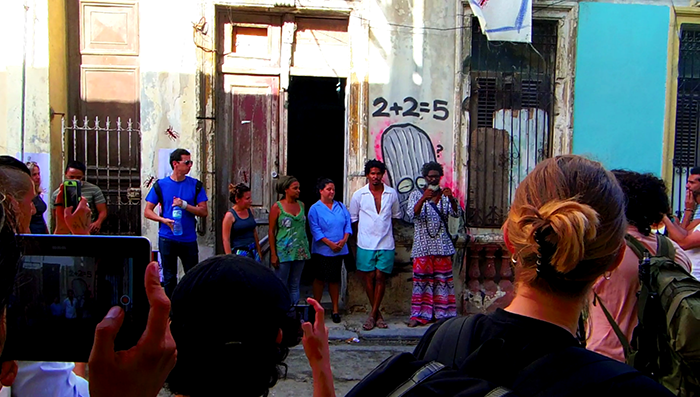
Economic support was one of the biggest obstacles for #00Bienal. “At the beginning, we thought that we would produce it with what we had at hand, but along the way we realised that we needed more,” Nuñez Leyva says. So a Gofundme campaign was set up, which raised $6,574. “But this wasn’t easy: the impact of the US blockade, our isolation from the world of networks and the impossibility of having credit cards made the process anguishing.”
Otero Alcantara was also imprisoned without cause on several occasions as part of the Cuban government’s campaign of harassment. Others who took part in #00Bienal, whether Cuban or foreign, received similar harassment. Many were even denied entry to the country, including the Cuban-American artist Coco Fusco.
When #00Biennial was announced in September 2017, the Cuban government immediately began to show its discontent through its cultural institutions. In an official declaration they branded the organisers as “unscrupulous people”. In response, #00Bienal’s first slogan was: “From the official to the unscrupulous.”
As culture is so tightly controlled in Cuba, only artists seen to be working in the interests of the regime can operate without restriction. Approved artists usually receive perks, something that gives them a higher status in society. Some artists risked all of this by taking part in #00Bienal. “The system used the worst blackmail against them because they gave the event a legitimacy that the government did not want,” Otero Alcantara says. “These artists were threatened by having their government accreditation taken away. Without this, they would find themselves without ‘official work’.”
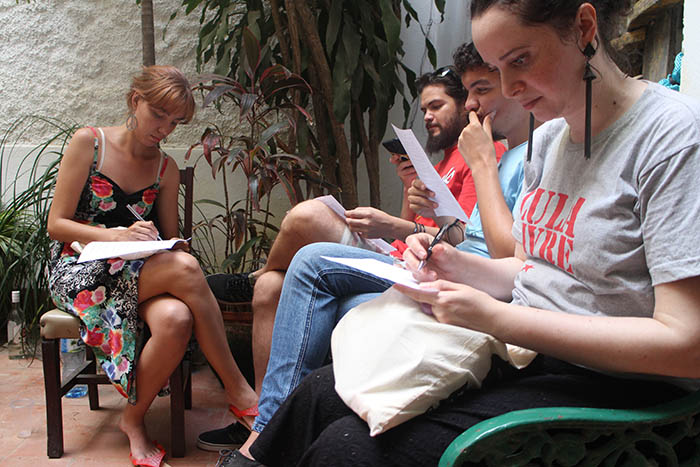
Government agents stalked the exhibitions while the organisers were accused of being in league with Cuba’s enemies. How does one respond to such accusations? “We responded by making an event that is as honest as possible, with a wide range of manifestations and artistic expressions that reflected the reality of Cuban art,” Nuñez Leyva says. “We responded with a list of more than 170 participants, not only Cubans, but from Mexico, Spain, Germany, the United States, Romania, Angola, Colombia, Denmark, Ukraine, Brazil, Venezuela, among them high-profile artists that Cuban institutions admire and collaborated with.”
The authorities even tried to prohibit the public from attending, sometimes successfully. Flyers and stickers were also confiscated. “But none of these actions were ever going to stop the energy of the event,” Otero Alcantara says.
“Despite all this pressure, the event went ahead, demonstrating that there is a group of people who are very courageous and have a real commitment culture,” Nuñez Leyva says. #00Bienal helped revive “a spirit of alternative rebellion” through the involvement of “countless numbers of totally unknown artists” that the state would never endorse.
For Otero Alcantara, the event’s success lies in the cohesion it created between artists, scholars and art enthusiasts, something that is unprecedented in the world of Cuban art. “We built an inclusive space of free creation and true collaboration between the people involved, exhibited the work of artists who were never going to have space in an official Havana Biennial and set a precedent for future projects,” he says. “This is one more step towards eliminating a fear that exists throughout Cuba.”
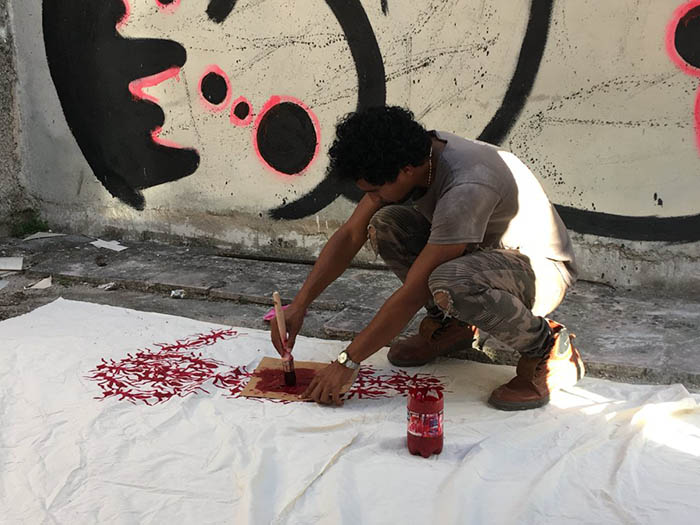
According to the organisers, the terms “revolution” or “revolutionary” have been hijacked and distorted by the Cuban regime. Such deformation has taken root so deep in the imagination of the Cuban people that just by mentioning the word “dissidence” is enough to be shunned, they explain.
“The #00Bienal was a humanistic project that brought to the fore essential values for any society such as unity, solidarity and collaboration,” Nuñez Leyva says. “The event also favoured the less privileged and created beauty and dialogue in favour of a new Cuba.”
The organisers of #00Bienal are under no illusions that life for Cuba’a dissident artists will magically become any easier under Cuba’s new president, Miguel Díaz‑Canel, who took over from Raúl Castro in April 2018. “The Cuban regime is more than any Castro,” Nuñez Leyva says. “It is a system based on a group of families that live both inside and outside the island, who have control over everything, which ultimately contributes to their own wealth.” This corrupt system relies on the deception of a people who have been left without even the strength even to protect themselves against poverty, she adds. “This situation leaves us with little hope, but we have to keep working.”
Otero Alcantara and Nuñez Leyva’s now want to show that #00Bienal wasn’t just a one-off, but is a serious project with longevity. “We will see if it is possible in two years to achieve something similar,” Otero Alcantara says.[/vc_column_text][/vc_column][/vc_row][vc_row][vc_column][vc_media_grid grid_id=”vc_gid:1528443291288-dfd45bff-0a16-7″ include=”100716,100712,100711,100710,100713,100709,100708,100707,100706,100704,100715,100705″][/vc_column][/vc_row][vc_row][vc_column][vc_column_text]
Amaury Pacheco (Cuba), Iris Ruiz (Cuba), Coco Fusco (Cuba-USA), Tania Bruguera (Cuba), Reynier Leyva Novo (Cuba), Ernesto Oroza (Cuba), Gerardo Mosquera (Cuba), Katherine Bisquet (Cuba), Jose Ernesto Alonso, Yuri Obregón (Cuba), Alein Somonte (Cuba), Alejandro Barreras (Cuba), Anaeli Ibarra (Cuba), Alejandro Taquechel (Cuba), Ariel Maceo Tellez (Cuba), Aryam (Cuba), Aldeide Delgado (Cuba), Armando Cuspinera (Mexico), Antonio Mas (Spain), Alicia Torres (Spain), Ana Olema (Cuba), Alexis Ruiseco (Cuba-USA), Alexandru Raevschi (Germany), Andrés X (Cuba), Alain Aspiolea (Cuba), Alexandre Arrechea (Cuba), Antoni Muntadas (Spain), Biennial Project (USA), Boris González Arenas (Cuba), Colectivo Corason i uevo (Antonio A. Orta, Maykel Almenteros y Pedro Pablo Bacallao) (Cuba), Colectivo Guerrillas Girls, Celia y Yunior (Cuba), Colectivo 2.50 (Ana Gómez, Argelia Leodegarío, Marco Antonio Rodríguez, Itandehuitl Orta, Yuvia Pérez, Esmeralda Pérez) (Mexico), Carlos Manuel Álvarez (Cuba), Clara Astiasarán, Chu (Cuba), David de Omni, David León (Cuba), Danilo Maldonado (El Sexto), Diego Gil (Spain), Eliecer Jiménez Almeida (Cuba), Erish (Mexico), El Oficio (Cuba), Ernesto Hernandez Busto, Enfori García, Filipa César (Portugal), Fabián (2+2 =5) (Cuba), Francis Sánchez (Cuba), Francisco Méndez (Mexico), Francisco Masó (Cuba), Fabian Martínez, Filio Gálvez, Fredric Snitzer, Gabriel Coto (Cuba), Gerardo Stübing (España), Gean Moreno, Henri Eric Hernández (Cuba), Hamlet Lavastida (Cuba), Héctor Trujillo (Cuba), Hugo Patao, Italo Expósito (Cuba), Iván de la Nuez (Cuba), Jesús Hdez-Güero (Cuba), Jesús Benítez (Mexico), José Luis Marrero (Cuba), Josvan Gonzalez Agramonte (Cuba), Julián Yunda Yepes (Mexico), Jenifer Acuña (Cuba), Juan Melo (Colombia), Juan Carlos Alvarez Miranda (Cuba), Jean-Lorin Sterian (Romania), José Bedia (Cuba), Julio César Llopiz (Cuba), Javier Marimón, José Manuel Mesías (Cuba), Keyezua (Angola), Kevin Arrow, Lía Villares (Cuba), Luis Trápaga (Cuba), Luiso, Leandro Villanueva (Sam 33) (Cuba), Lester Dubé (Cuba), Lala Misosniky (Romania), La Alianza (Cuba), Liliam Dooley, Leandro Feal (Cuba), Lourdes Porrata, Miquel García (Spain), Marisol Maza (Mexico), Marcel Marquez (Cuba), Marianna Liosi (Germany), MO colectivo (Mariam Abrajim y Octavio Salazar) (Colombia), Magdiel Aspillaga, Mysora García, Nonardo Perea (Cuba), Natalia López (Colombia), Osmel Almaguer Delgado (Cuba), Osmany Carratalá (Cuba), Oscar Salamanca (Colombia), Orlando Hernández (Cuba), Pablo Pinto (Colombia), Polyanna Morgana (Brazil), Political Architecture: Critical Sustainability (PA:CS) (Denmark), Peter Menéndez, Rafael Carabano (Venezuela), Raúl Meriño (Cuba), Ras Yoe, Ricardo Figueredo, Rodolfo Peraza (Cuba), Rafael Domenech, Rirkrit Tiravanija, Svitlana Biedarieva (Ukraine), Soandry del Río (Cuba), Sandra Ceballos (Cuba), Santiago Alvarez Méndez (Colombia), Sandor (Cuba), Thiago Morandi (Brazil), Tomás Sánchez (Cuba), Tomas Vu, Tonel (Cuba), unx Pardo Ibarra (Colombia), Ulises Valdés (Mexico), Walfrido Valera (Cuba), Yaima Pardo (Cuba), Yasser Castellanos (Cuba), Yesica Suárez (Colombia), Yulier P. (Cuba), Yoenis Eloy Mayeta (Cuba), Yimi Konclase (Cuba), Yvelin Buenrostro (Mexico), Yucef Merhi (Venezuela), Yornel Martínez (Cuba), Yali Romagoza (Cuba), Yanier H. Palao (Cuba).[/vc_column_text][/vc_column][/vc_row][vc_row][vc_column][vc_basic_grid post_type=”post” max_items=”4″ element_width=”6″ grid_id=”vc_gid:1528443291296-0ad2c295-a239-7″ taxonomies=”104″][/vc_column][/vc_row]
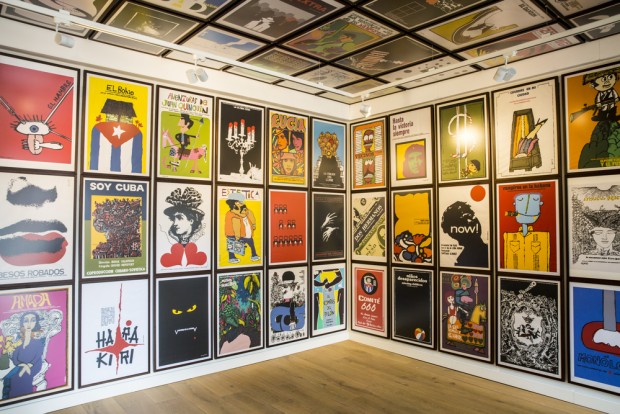
August 2015: opening of the Cuban Film Posters exhibition Soy Cuba as part of World Cinema Amsterdam. Credit: Shutterstock / Cloud Mine Amsterdam
“[T]he fault of many of our intellectuals and artists is to be found in their ‘original sin’: they are not authentically revolutionary.”
— Che Guevara, Man and Socialism in Cuba, 1965
Last year was a good one for Cuban artists. With renewed diplomatic relations with the US, a boom in Latin American art and Cuba’s exceptional artistic talent — fostered through institutions such as the Instituto Superior de Arte in Havana — works by prominent Cuban artists fetched top dollar at international auctions, and the Cuban film industry was firmly in the international spotlight.
While the end of the embargo brought with it hope for political liberalisation on the island, as with previous periods of promise in Cuban history cases of repression and censorship of dissident artists were rife in 2015.
So let’s begin again: Last year was a good one for Cuban artists who adhere to the country’s long-established revolutionary narrative and don’t embarrass the regime.
The fear of censorship for art that is critical of the government has been fostered through decades of laws and repression that limit freedom of expression. This can mean stigmatisation, the loss of employment and even imprisonment. Charges such as “social dangerousness” and insulting national symbols are so vague they make convictions very easy.
“Artists are among the most privileged people in Cuban society — they make money in hard currency, travel, have frequent interaction with foreigners and they don’t have boring jobs,” explains Coco Fusco, a Cuban-American artist, 2016 Index Freedom of Expression Awards nominee and author of Dangerous Moves: Performance and Politics in Cuba. “Artists function as a window display in Cuba; proof of the success of the system.”
But if an artist engages in political confrontations, they can draw unwanted attention, says Fusco.
One artist accused of doing just that is critically-acclaimed Cuban director and fellow nominee for this year’s Index Awards Juan Carlos Cremata. In 2015, he staged a production of Eugene Ionesco’s Exit the King, about an ageing ruler who refuses to give up power. The play lasted two performances before being shut down by the National Council of Theatre Arts and the Centre for Theatre in Havana.
“Exit the King was banned because according to the minister of culture and the secret police we were mocking Fidel Castro,” Cremata told Index on Censorship. “This wasn’t really true; what they fear is real revolutionary speech in theatre.”
When he spoke out against the move, Cuban authorities terminated his theatre contract, effectively dissolving his company, El Ingenio.
Cremata, whose career spans three decades, confesses the shutting down of Exit the King took him by surprise. “We are living in the 21st century, and according to the official propaganda, Cuba is changing and people can talk about anything,” he says. “This, as it turns out, is a big lie by people who are still dreaming of the revolution.”
“With their censorship, they show how stupid, retrograde and archaic their politics are,” he says.
As so much funding for artists comes from the state, non-conformist artists often find themselves in difficult financial situations. “I’ve had to reinvent my life,” Cremata says. “I’m trying to receive some help from friends who offer to work with me for free, but this will not be eternal, as they have families.”
Cremata himself has an adopted daughter and has her future to think about. “I truly believe life will change and better times will come with or without their approval, but it is very, very hard.”
Art has always been at the centre of Cuban culture, but under Fidel Castro it became a tool for spreading socialist ideas and censorship a tool for tackling dissent. Evidently, Cuba isn’t entirely post-Fidel, explains Fusco. “Fidel is still alive, his brother is in charge and his dynasty is firmly ensconced in the power, with sons, nieces and nephews in key positions,” she says. “Although I don’t think anyone over the age of 10 in Cuba believes the rhetoric anymore.”
Very few may believe the rhetoric, but going against it can still land you in prison, as was the case with Index Awards nominee Danilo Maldonado, the graffiti artist also known as El Sexto. Maldonado organised a performance called Animal Farm for Christmas 2014, where he intended to release two pigs with the names of Raúl and Fidel Castro painted on them. He was arrested on his way to carry out the performance and spent 10 months in prison without trial.
International human rights organisations condemned his imprisonment — during which he was on a month-long hunger strike — as an attack on freedom of expression.
The prospect for improving political freedoms doesn’t look good, and anyone who expected any different due to Cuba’s normalisation of relations with the US is naive, says Fusco.
“Washington is not promoting policy changes to improve human rights,” she says. “Washington is promoting policy changes to 1. develop better ways to exert political influence in Cuba; 2. to revise immigration policies and control the steep increase in Cuban illegal migration to the US; 3. to give US businesses and investment opportunity that they need (particularly agribusiness); 4. to avoid a tumultuous transition at the end of Raul Castro’s term in power that would produce more regional instability (i.e. the US does not want another Iraq, Libya or Syria).”
Even within Cuba there is an absence of discussion about civil liberties, strong voices of criticism of state controls and collective artist-based efforts to promote liberalisation.
“Artists are generally afraid to mingle with dissidents,” says Fusco. “There are a few bloggers who post stories about confrontations with police and political prisoners, a few older human rights activists who collect information about detentions and prison conditions, a handful of opposition groups who advocate for political reforms, but they have virtually no influence on the government.”
In the past, Cuban authorities used the US embargo as an excuse to justify restrictions on freedom of expression. Now that the excuses are running out, it is time for the Cuban government allow its dissidents the same freedoms as its conformists.